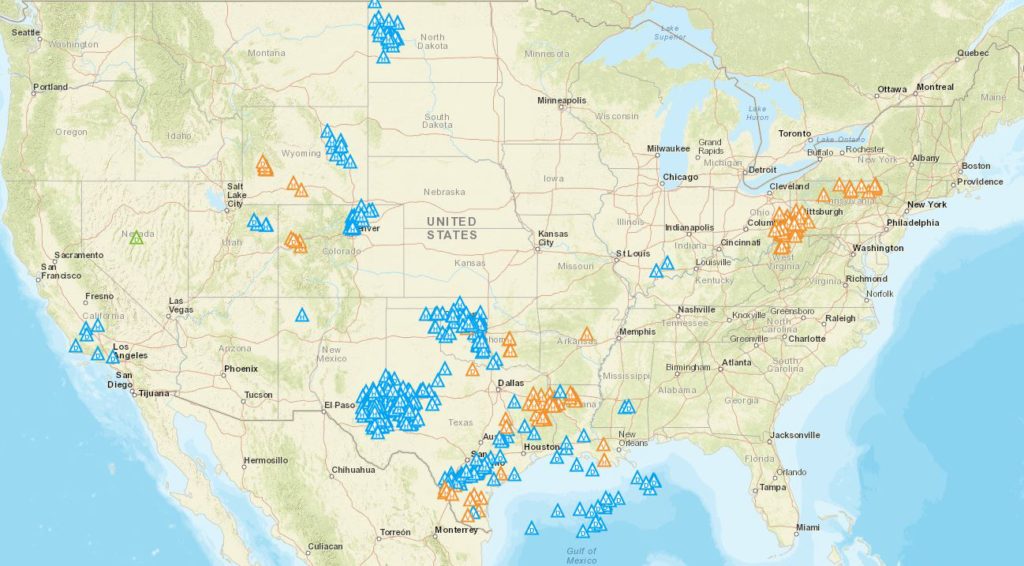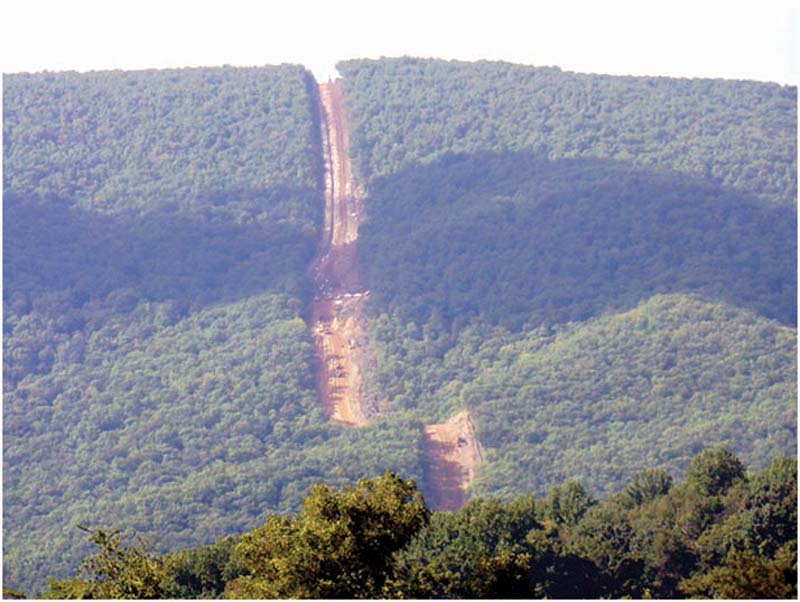 IMPORTANT!: The following article includes good advice about how to improve a “standard” oil and gas lease. However, it is no substitute for hiring a lawyer to read the exact document you have and give you advice about the exact language of that document. Even if you decide not to hire me, go find a lawyer that knows oil and gas leases.
IMPORTANT!: The following article includes good advice about how to improve a “standard” oil and gas lease. However, it is no substitute for hiring a lawyer to read the exact document you have and give you advice about the exact language of that document. Even if you decide not to hire me, go find a lawyer that knows oil and gas leases.
With the price of oil and natural gas rising and, more importantly, with production numbers dropping and new pipelines getting ready to be built, leasing activity in West Virginia is going to see another uptick. People who have never seen an oil and gas lease will be needing some advice. The following is some good basic advice that everyone can benefit from. Rising tides and all……
THE MONEY – The Only Thing You Think Matters
The first thing anyone thinks of, and the first thing any landman will discuss after establishing that you own the oil and gas, is money. The landman will offer you a signing bonus. The signing bonus is in exchange for the rights to develop the oil and gas for a certain number of years.
You can always get more than their first offer. You don’t wear your best pair of shoes to get to the dance. As a rule of thumb, you can usually expect to get double what their first offer is, unless it’s over about $2,000/acre or below $500/acre. (Note: If the company you’re dealing with is trying to get a delay rental lease, the bonus is paid out in equal yearly amounts. It’s a little harder to understand, but the landman should be able to explain to you the difference between what they’re doing and a “paid up” lease, including the possibility of having to pay some of it back to the company. Yes, that’s often in delay rental leases.) Don’t be shy when negotiating the bonus, because the bonus can be the only money that you ever get. If the company never drills on the land there will never be any production and there will never be anything to pay royalties on.
That segues nicely into the next thing that everyone thinks about–the royalty. The statutory minimum royalty in West Virginia is 1/8, or 12.5%. Don’t settle for 1/8, though. You can get almost always get 15%, and the huge majority of leases we have negotiated over the years have ended up at 18%. If the company does drill and produce, getting a little more money for that production can be a nice thing.
Along the same line of thought, you’re going to want to get what’s called a gross proceeds lease. The company is going to want to deduct some of the costs of transporting the gas from the well to wherever it gets sold, and as many other costs as it can. In West Virginia, the company is responsible for those costs up until it sells the gas. Don’t let them stick you with those costs. Not only will you end up with more royalty money, you will also find it a lot easier to read and understand the data on the check stub.
LIABILITY – You Should End Up With None
The company is going to ask you to warrant the title to the oil and gas. In other words, they want you to promise that you own the oil and gas. If it turns out later that you don’t own the oil and gas, or that you own a smaller portion of it, then they will ask you to return money to them. Even worse, they could ask you to fix the problems with the title. That’s expensive. Thousands of dollars worth of expensive.
You probably didn’t have any clue you owned oil and gas in West Virginia before the company told you so. You are acting in reliance on the company’s research. It doesn’t make sense for the company to turn around and ask you to warrant that the company’s work was done right. Tell them you won’t warrant title.
Also, make sure that there isn’t anything in the lease about old wells or old leases. It’s a pretty safe bet that there is an old well somewhere on that property, and there’s also a chance that there’s an old lease that could be affecting the property.
Finally, go ahead and ask them for an indemnification clause. It’s not terribly likely that you’ll be liable for bad things that happen while the company is drilling. They have deep pockets, you don’t. They’re easy to find, you’re not. They’re doing things on the property, you probably had to look up West Virginia on Google. But it’s pretty easy to get and nice insurance to have, so ask.
LIMITED SCOPE – Oil and Gas Production Only
An oil and gas lease should be limited to just producing oil and gas. Most of them aren’t. Most of them include things like the right to convert it to gas storage, or the right to use the property for a disposal well. Many of them also include the right to produce coal bed methane.
The main problem with most of these is that they don’t pay well. At all. They pay a few hundred dollars a year most of the time. Even worse, they keep that lease alive longer than it should be. In other words, you won’t be able to re-negotiate the terms of the lease or get a new signing bonus.
In the case of coal bed methane, the company you are dealing with doesn’t drill coal bed methane wells. How do I know? Because I’ve asked them. The best case scenario for coal bed methane is that another company will approach the company that owns your lease and work out a signing bonus with them. Once they drill and start producing they will send you royalties, but nothing more.
You should make sure the lease is only for the purpose of producing oil and gas and other products that might come out of the well with the oil and gas.
FINAL WORDS – It’s Complicated
There are a lot of other things that we help people with when it comes to oil and gas leases, including making sure they’re getting the most amount of money they can for the area their property is in. What’s in this article is the basic stuff that can help you improve the standard boilerplate that the company will present to you. It can make your lease…..palatable.
If you own the surface it becomes even more important that you get a good lawyer on your side.
We highly recommend you hire us to help you with your lease, even if it’s just a quick initial consultation. You’ll leave with a lot more knowledge, confidence, and peace of mind than you came in with.
Give us a call at 304-473-1403 to schedule an appointment. I promise we don’t bite.
 If you know where your minerals are located and you’re wondering whether there’s a drilling rig on or near your minerals, this web site is the place to go.
If you know where your minerals are located and you’re wondering whether there’s a drilling rig on or near your minerals, this web site is the place to go.

